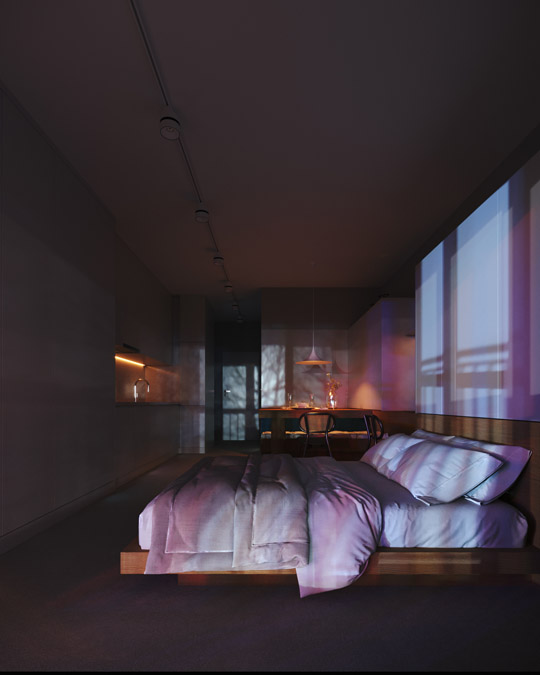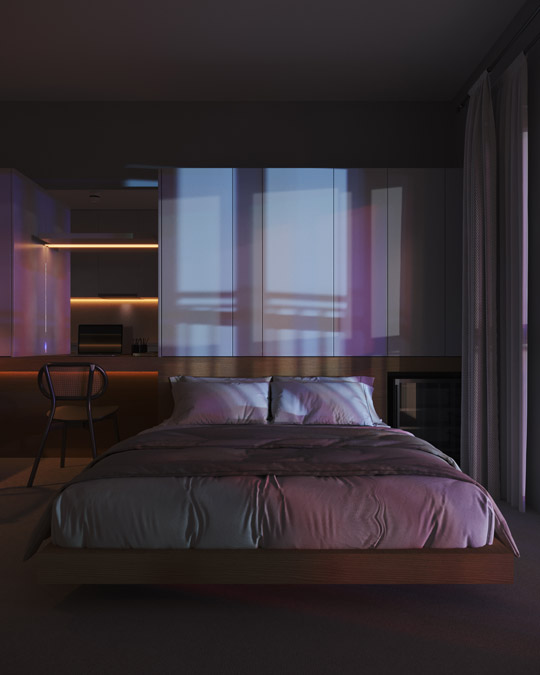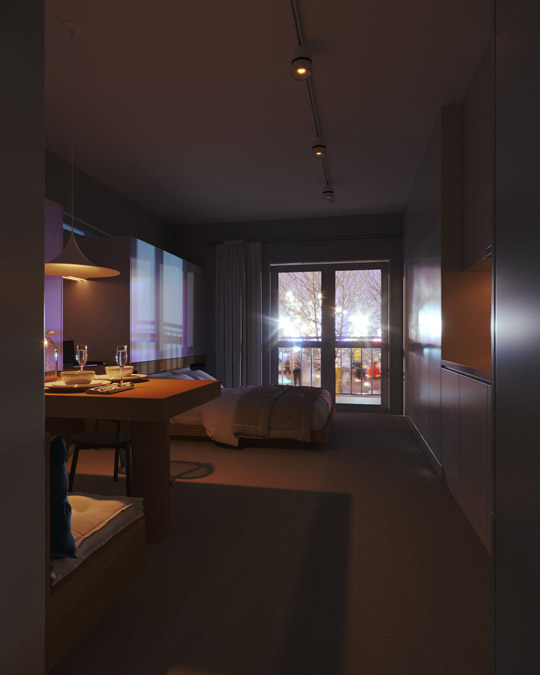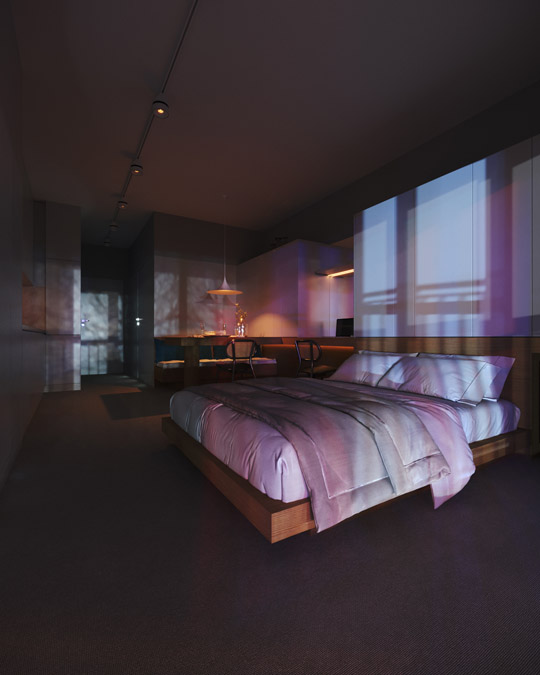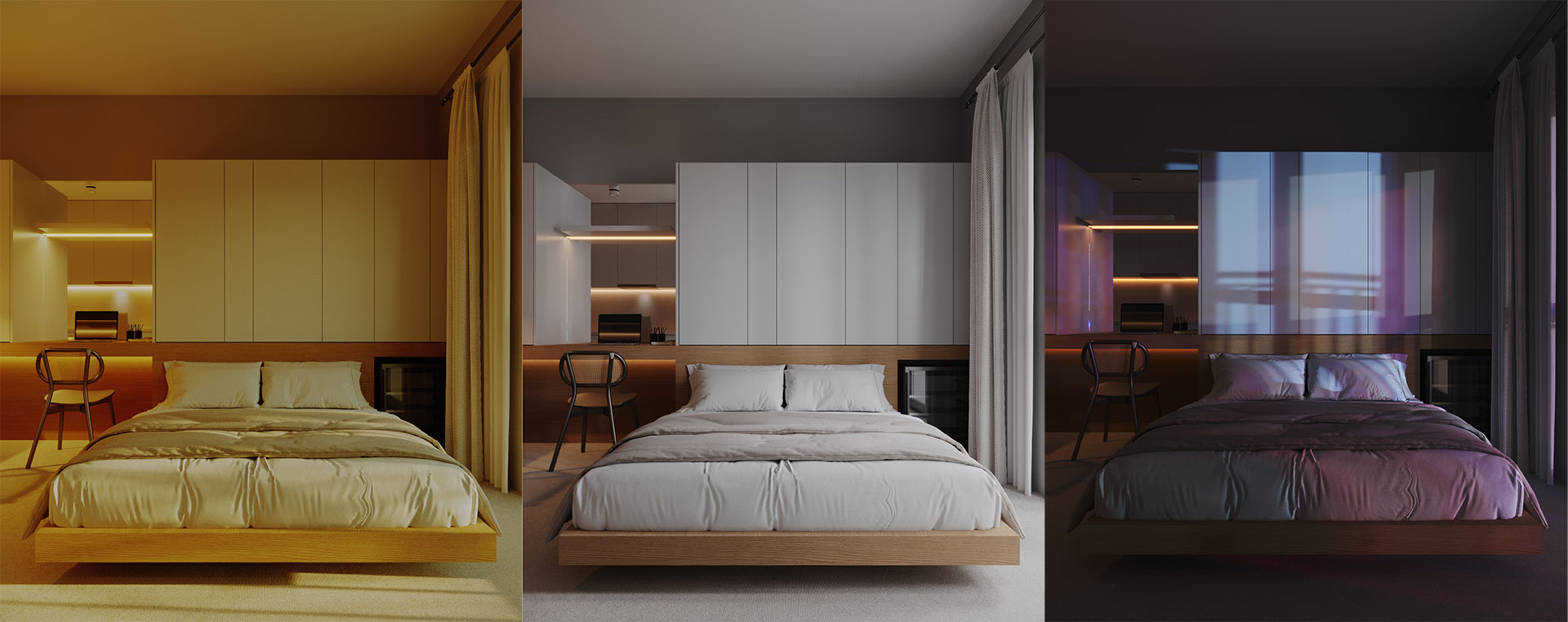
Rendering different lighting moods with 3D rendering refers to the process of creating a visual representation of a building or space that includes different lighting effects to convey different moods or atmospheres. This can be achieved by adjusting the brightness, color, and direction of the lighting in a 3D model.
The following are some ways to render different lighting moods with 3D rendering:
- Daytime: This type of lighting mood is achieved by using bright, neutral lighting that simulates the natural daylight that enters a building through windows or skylights.
- Nighttime: To create a nighttime mood, the brightness of the lighting in the 3D model can be reduced and colored lighting can be added to create a warm, intimate atmosphere.
- Mood lighting: By adjusting the brightness and color of specific areas in a 3D model, it’s possible to create a range of moods, from warm and inviting to cool and relaxing.
- Dramatic lighting: To create a dramatic lighting mood, the lighting in a 3D model can be adjusted to create strong shadows and highlight specific areas or objects.
- Natural lighting: To create a natural lighting mood, the direction and brightness of the lighting in a 3D model can be adjusted to simulate the changing light conditions of different times of day and seasons.
Below are three examples of the same interior space with different lighting moods
Overcast
A bright neutral light that simulates natural light from an overcast day entering the space via the windows closest to the bed
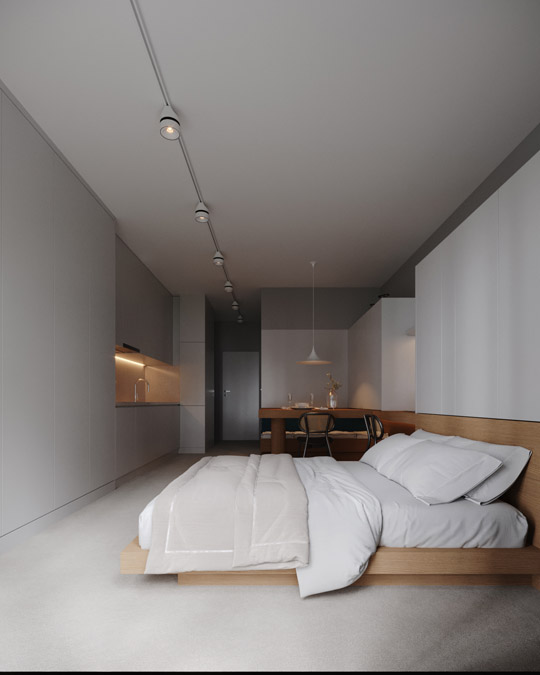
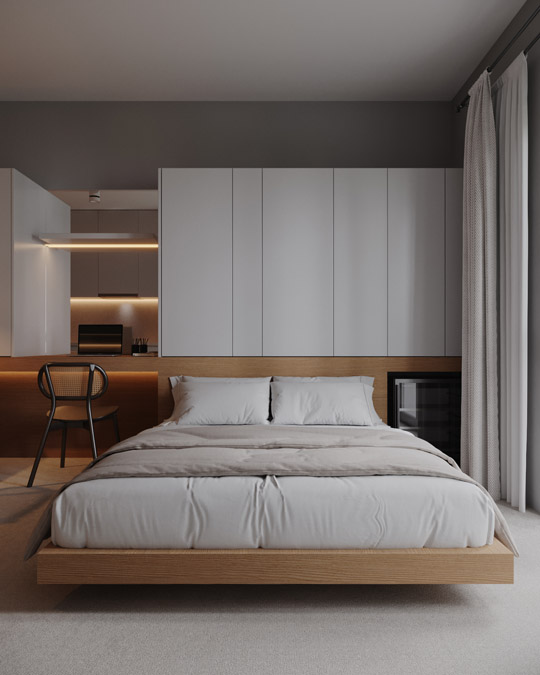
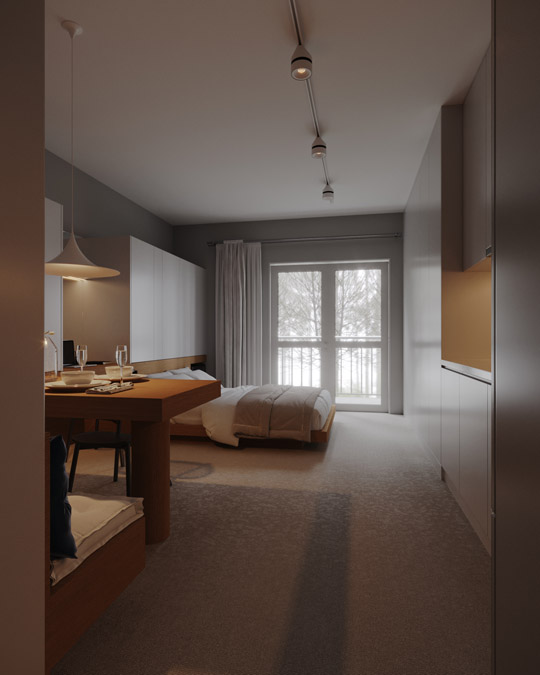
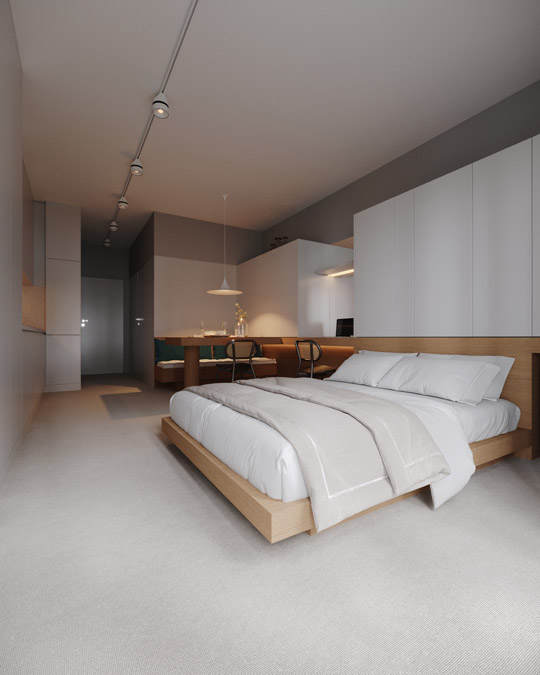
The Golden Hour
The last hour before sunset and the first hour after sunrise are much sought-after by photographers. These times provide the perfect light to capture stunning photos. The renderings simulate this light entering the space via the window
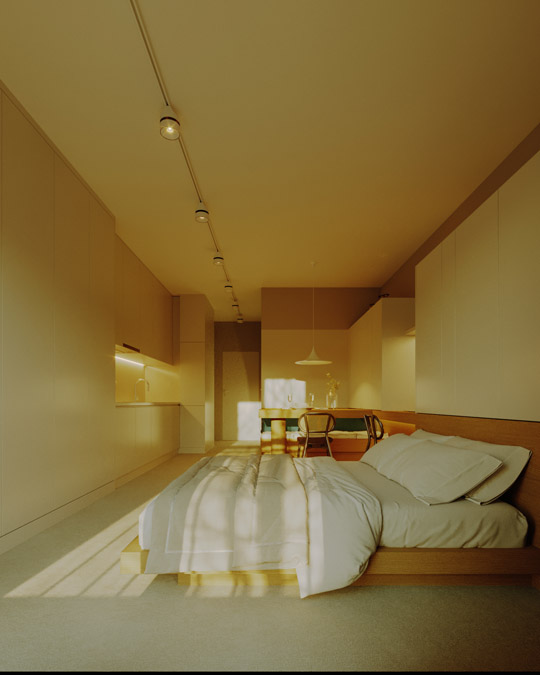
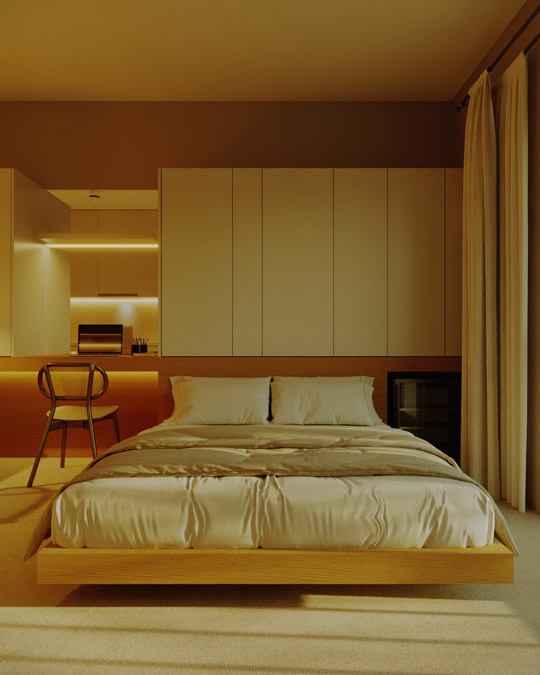
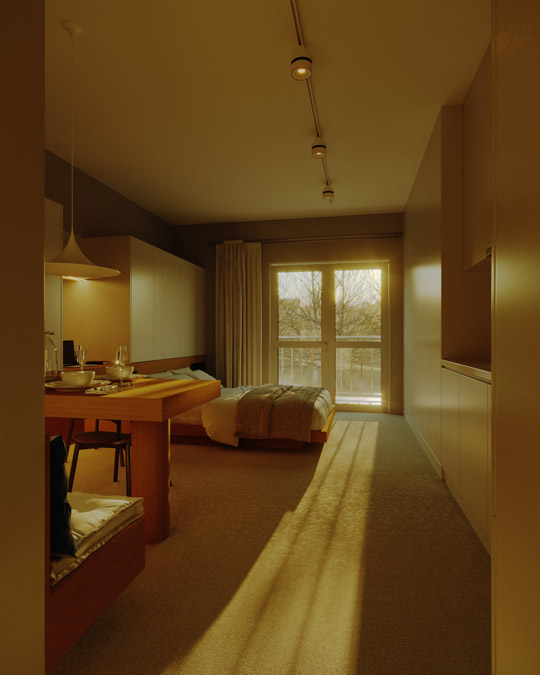
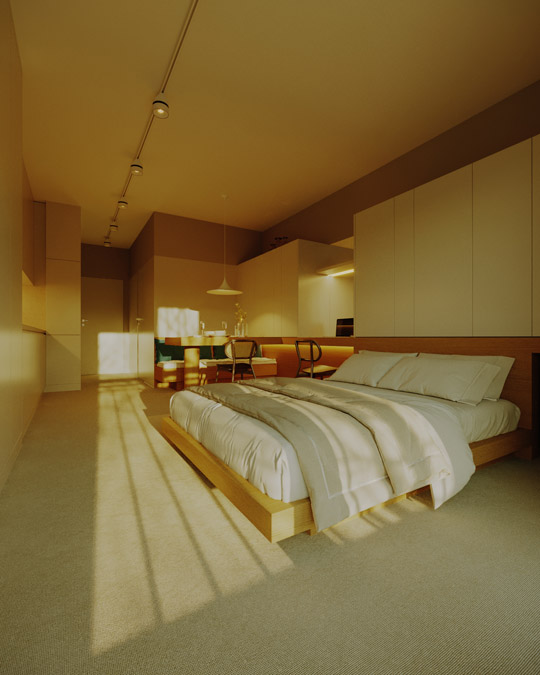
Nighttime
The brightness of the lighting in the 3D model has been reduced, and colored lighting has been added to create a warm, intimate atmosphere with street lighting entering from the window.
